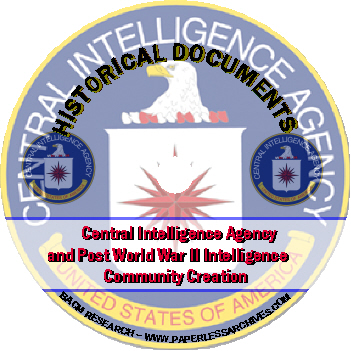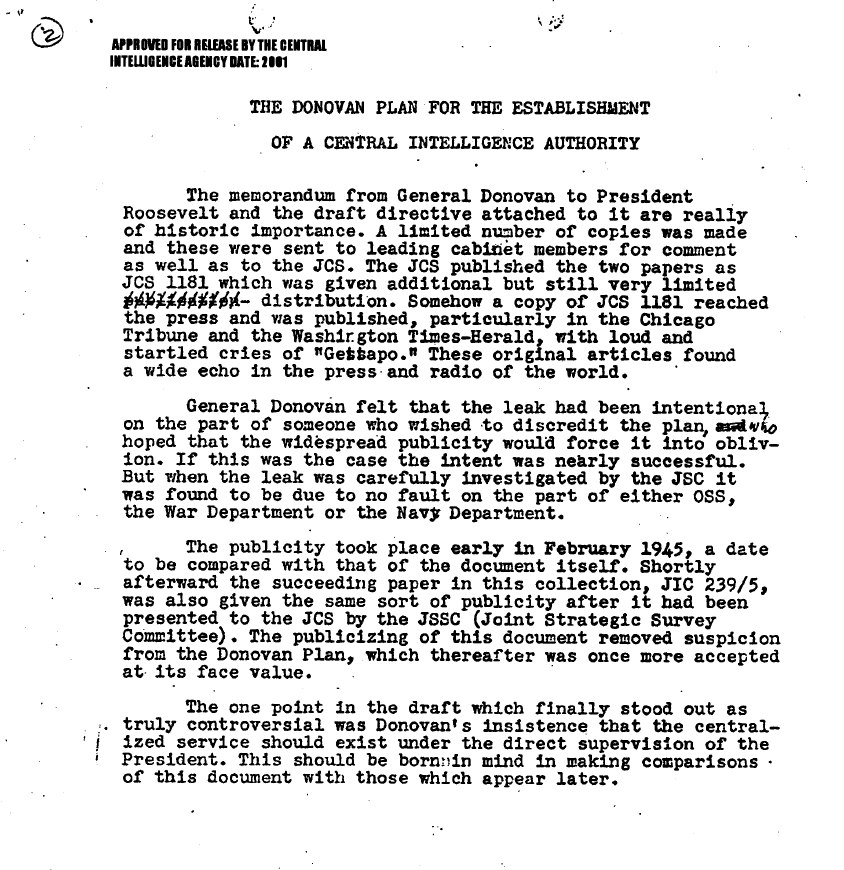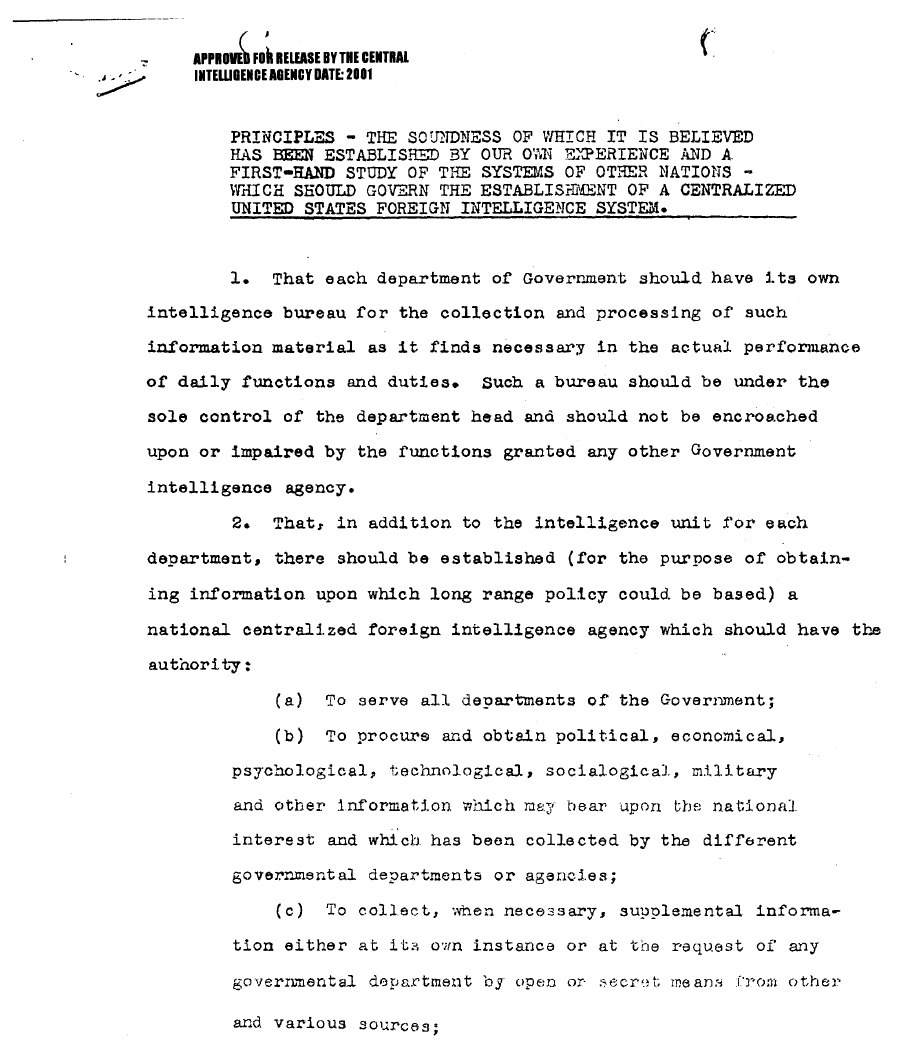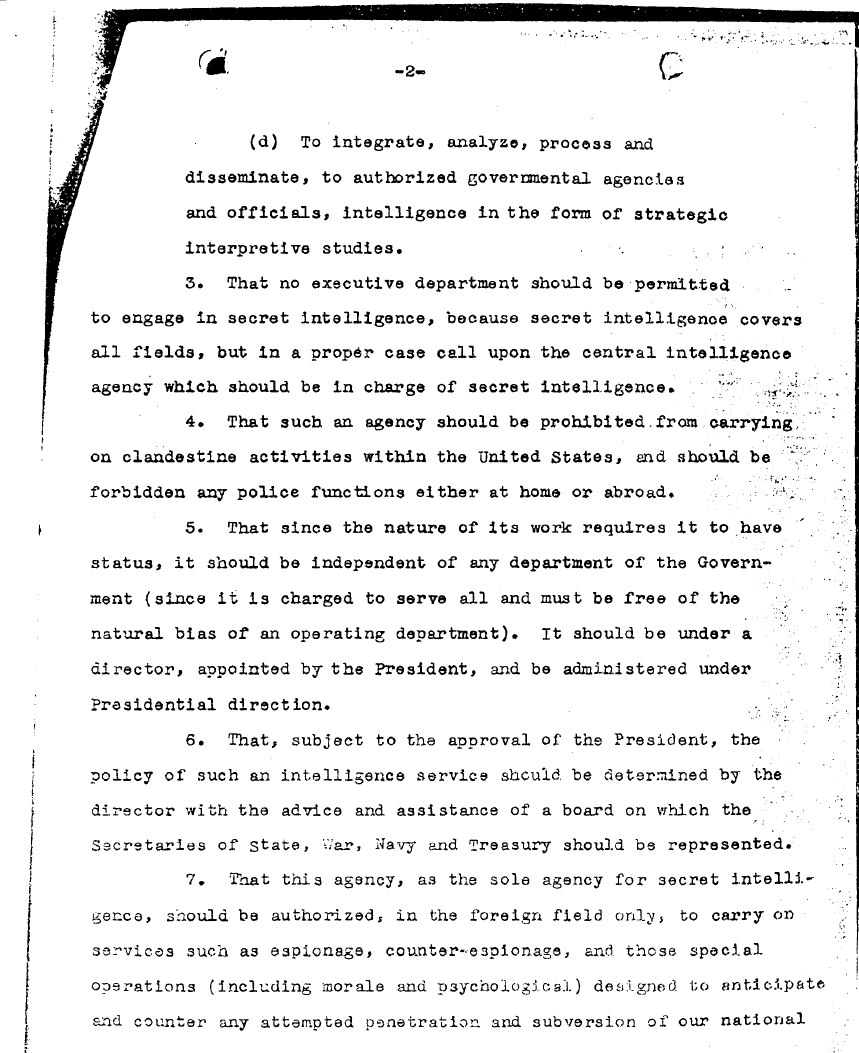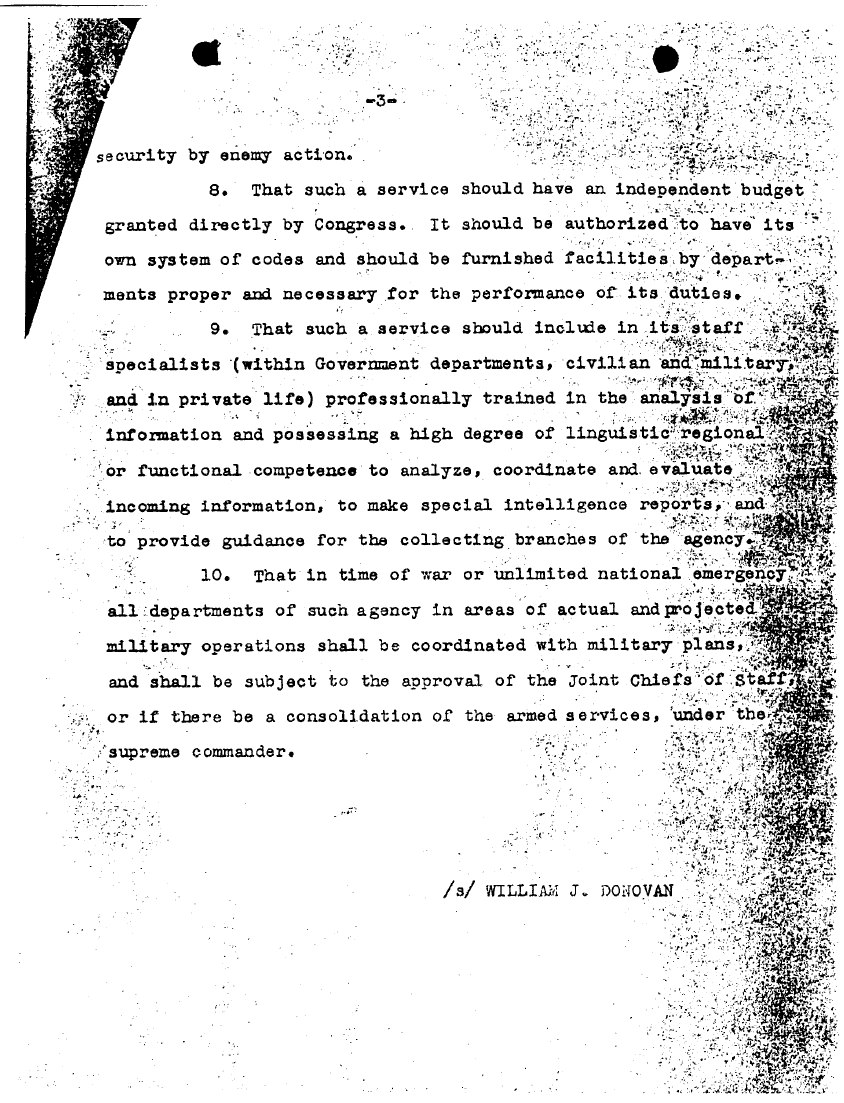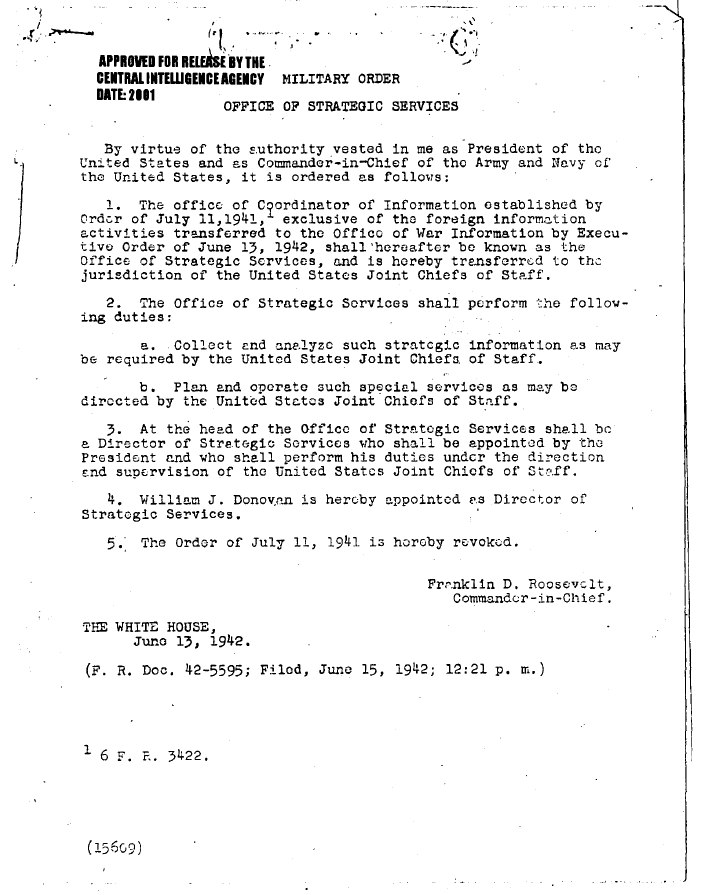|
The documents date from 1940 to early 1953. Some material was not declassified until 2008. The documents include notes, letters, memoranda, radio bulletins, briefings, minutes, routing slips, drafts, reports, speech transcripts, chronologies, directives and executive orders. The documents follow the many steps that led to the founding of the CIA. They display the considerable political and legal finesse required to resolve the plans, suggestions, maneuvers, and actions that ultimately led to the establishment of the Central Intelligence Agency and other national security entities.
At the end of World War II, the United States had a collection of intelligence entities including: FBIS � Foreign Broadcast Intelligence Service; CIG � Central Intelligence Group; ICAPS - Interagency Coordinating and Planning Staff; IAC � Intelligence Advisory Committee; SSU � Strategic Services Unit, War Department; OSO � Office of Special Operations; OSS � Office of Strategic Services; NIA � National Intelligence Authority; DCID � Director of Central Intelligence Directive; NSCID � National Security Council Intelligence Directive; and IAB � Intelligence Advisory Board.
At the end of World War II, General William Donovan, head of the Office of Strategic Services (OSS), the wartime intelligence agency run by the War Department, put forth a plan to continue intelligence activities as an independent agency reporting directly to the President. Other senior US officials began debating the closing, restructuring, and creation of new agencies or internal intelligence-gathering divisions within existing arms of the government, often their own agencies or military branches, to form a new, centralized, post-war US Intelligence Agency.
All these plans faced a major obstacle; a skeptical President Harry Truman was unenthusiastic about establishing a post-war secret intelligence apparatus as a permanent government function. As his first major decision concerning intelligence at the end of World War II, Truman had little hesitation in shuttering the OSS. But in its absence, the State Department, the Navy, and the War Department recognized that a secret information vacuum loomed, triggering calls and discussions for the creation of something to replace wartime intelligence services, something different from the OSS, to take over in 1946.
This collection of documents display the give-and-take required by the military branches, government agencies, Congress, and the White House, to establish duties, responsibilities, personnel, leadership, reporting, funding, and physical locations for an entirely new agency, the Central Intelligence Agency. The documents in this collection provide the reader with a view of the plans and suggestions that were colored by political expediency, conflicting goals, personal antipathy to all forms of intelligence gathering, and turf battles among existing Intelligence Community players, all of it overlaid by the widespread belief that an expanded, permanent, centralized intelligence group was urgently needed to face the post-War world.
This document collection was curated and released by the CIA's Historical Review Program, part of the CIA Information Management Services, which identifies, collects, and produces historically relevant collections of documents. This collection was compiled for a Historical Review Program symposium called "The Creation of the Intelligence Community," held at Culver Academies, Culver, Indiana, on 14 May 2009.
At the event Christine Burke, a Culver Academies Global Scholar, opened the meeting by saying that reading the declassified documents was "like watching history come to life." She commended the CIA for making the documents available to the Culver students, noting that reading first-hand accounts of historical events is, "a lot more intriguing than just reading out of a textbook." CIA Chief Historian David Robarge kicked off the event by describing how the United States' intelligence requirements after World War II interacted with political, legal, and institutional forces leading to the overhaul of the US national security apparatus. These activities ushered the passage of the National Security Act of 1947, which created a National Security Council, a Secretary of Defense, a statutory Joint Chiefs of Staff, the Department of the Air Force, and a Central Intelligence Agency.
Other speakers included NSA Chief Historian Dr. David Hatch, who provided a presentation on how inter-service rivalries in the field of communications intelligence created the underpinnings for the creation of the National Security Agency. Dr. David Barrett, Professor of Political Science, Villanova University, described how the relationship between Congress and the Intelligence Community has evolved since 1947; and Eugene Poteat, President of the Association of Former Intelligence Officers, gave a personal perspective of the role of intelligence in informing senior US policymakers.
Also included within this collection is a program created for the event which includes an essay by Michael Warner of the CIA History Staff titled, "A Chronology of Milestones in the Creation of the U.S. Intelligence Community."
|
